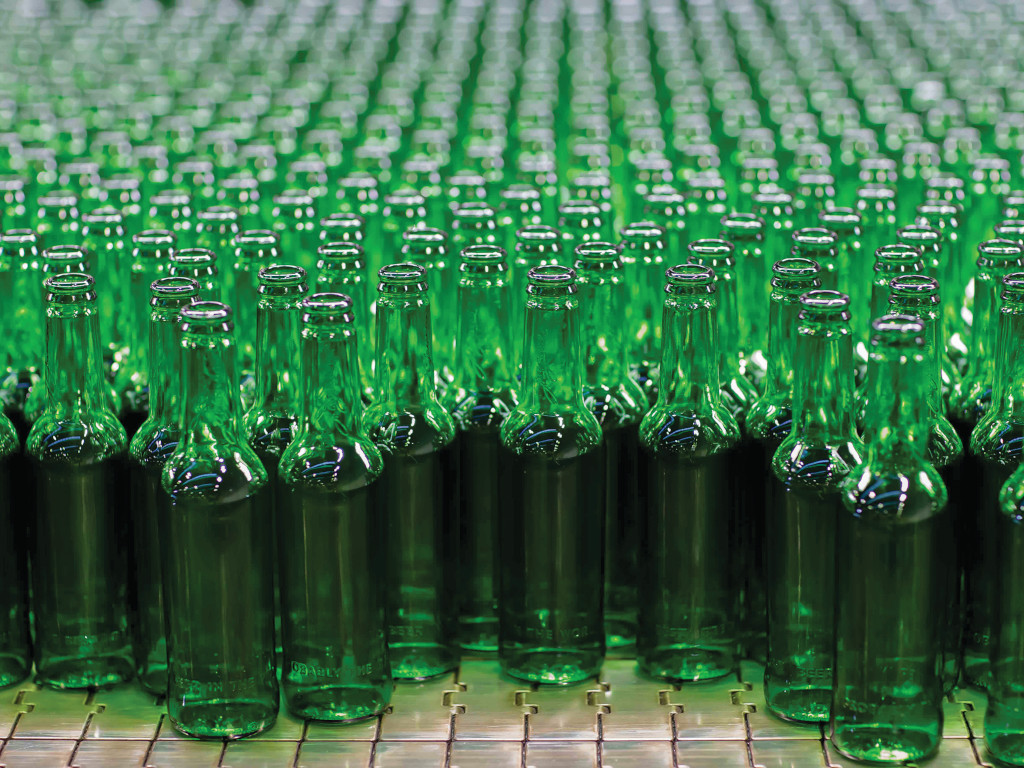GW: How pleased were you with the initial results of the collaborative biofuel trial to create the world’s most sustainable glass bottles?
We are really pleased with the results of the trial that have the potential to flip glass bottles from our most carbon intensive to least carbon intensive packaging format.
GW: Who were the protagonists behind the trials and what does it mean to you and the Carlsberg organisation to be at the forefront as one of the key partners alongside Encirc?
This trial was led by the Encirc team through the Glass Futures initiative, part of the Department for Business, Energy and Industrial Strategy (BEIS) Energy Innovation Programme. We are incredibly proud to work with such forward-thinking suppliers who are innovating to transform the future of the industry.
GW: Can this development really be considered the dawn of carbon zero glass bottle manufacturing and what do you consider to be the next steps with the biofuel initiative?
This is a strong start, and through the work with BEIS and the Glass Futures initiative, we hope that the trial feeds into policy development and contributes to making alternative fuels more viable in the long-term.
GW: Is this project a good example of collaborative efforts towards achieving your sustainability goals?
We have ambitious sustainability targets, including science-based targets to play our part in limiting global warming to 1.5°C. We know that we cannot achieve them alone, and packaging is by far the largest portion of our value chain footprint. In fact, glass bottles account for around 10% of our beer-in-hand emissions at Carlsberg Marston’s Brewing Company. Partnerships like this, together with our suppliers, are vital to challenge convention and find new ways of working. It’s a fantastic example of a supplier-led initiative, working closely with government and across the industry. And we’re proud to be part of it.
GW: Could there be potential for similar developments in other areas of your business?
We will only achieve our ambition of tackling climate change when we partner with our suppliers, making partnerships like this vital. We work with our can and board suppliers to continually lightweight and identify opportunities to reduce the carbon impact of our packaging. And solutions like Snap Pack – our small packs of cans without plastic rings – were the result of long-term partnerships with our suppliers and years of innovation. There is much more to come.
GW: In general, what is Carlsberg’s approach to a strengths and weaknesses assessment of the different materials available to package its beers?
We know that our consumers choose different beers in different packaging for different occasions. Our ambition is to continually improve our packaging in line with our sustainability commitments set out in Together Towards ZERO, including our science-based targets to reduce the carbon impact of our beers across every stage of the value chain. That includes packaging.
GW: The brewing process and the subsequent distribution of beer to retailers, supermarkets, caterers etc. is an energy-intensive business. What is Carlsberg’s strategy in addressing the need to reduce its carbon footprint?
As part of our sustainability programme, Together Towards ZERO, we have science-based targets to ensure that we play our part in limiting global warming to 1.5°C above pre-industrial levels. This includes a target for zero emissions from our breweries across the Carlsberg Group by 2030, and a 30% reduction in beer-in-hand emissions (our total value chain) from 2015–2030. To achieve this we’re constantly testing new solutions and partnering with suppliers to transform our supply chain.
We look at every part of the process to identify opportunities for efficiency and innovation. For example, at the Carlsberg Research Laboratory in Copenhagen, a team of postdoctoral scientists are tasked with identifying and testing solutions to meet our carbon and water targets at our breweries.
Further detail is available in the Carlsberg Group Sustainability Report 2020.
GW: Has lightweighting of bottles assisted your sustainability goals in recent times?
Yes, glass bottles account for around 10% of our beer-in-hand emissions at CMBC. With the new Carlsberg bottle we shaved 10g off, which saved almost 130 tonnes in the first year alone. Small advancements like this all help to meet our targets to cut carbon emissions throughout the value chain. The trial with Encirc has even greater potential, transforming glass from our highest carbon impact packaging format to our lowest. We’re excited by the opportunities and to be working with such an innovative supplier.
GW: Does a glassmaker’s commitment to reducing its own carbon footprint influence the bottle purchasing process?
We have ambitious targets, and we will only meet them by working together with our suppliers, customers and partners. We are determined to work with people and partners who genuinely share our ambition for a sustainable future in beer. And we have a long history of sharing and are always open to ideas and innovations.


